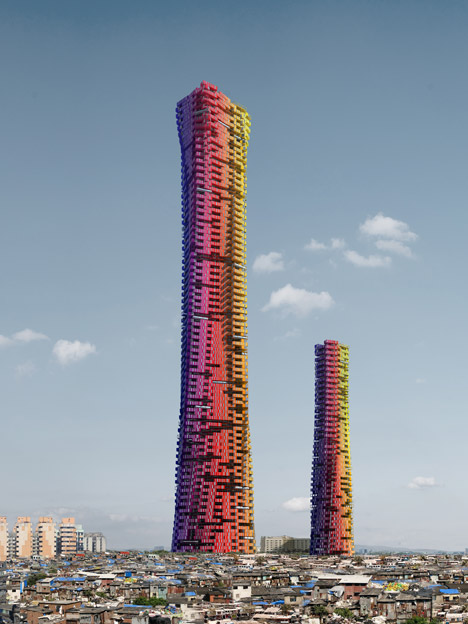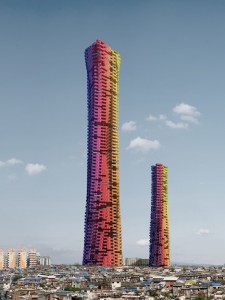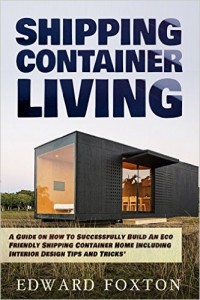Housing issues are everywhere. We have massive problems in cities like LA and New York where property is expensive and there are many residents too poor to participate in ownership. Urbanization in developing countries is leading millions from the countryside to cities. Its estimates that by 2030 6 in 10 people worldwide will lie in cities. And we all know how good central governments are at urban planning!
So smart architects everywhere are looking at the ubiquitous shipping container. Designed to be watertight, secure and strong, they make a great temporary solution – or in the HiLo home in Denver – a permanent one.
Could you use a shipping container home right now? Here are a few.
CRG Architects, which has offices in China and Nigeria, came up with the concept for Container Skyscraper to provide temporary accommodation to replace slum housing in developing countries. The firm proposes that recycled shipping containers could be stacked to create high-density, cost-effective housing in urban areas – building on a string of inventive proposals for the storage structures from architects and designers.
 In Denver, this 2,192-square-foot home in LoHi, made up of seven recycled shipping containers, could be yours for $749,000! Built in a day from blocks assembled off-site, this fashionable home has 2,192 square feet of living space and three bedrooms and 2.5 bathrooms.
In Denver, this 2,192-square-foot home in LoHi, made up of seven recycled shipping containers, could be yours for $749,000! Built in a day from blocks assembled off-site, this fashionable home has 2,192 square feet of living space and three bedrooms and 2.5 bathrooms.
In Hawaii, a homeless “transitional” housing project is currently under construction on Sand Island.
By the end of 2015, the city plans to have all 25 containers up and ready for a total of 83 people. Each container will have been used just once to ship goods into Hawaii. They will then be modified to accommodate either three separate, lockable units for three single occupants or divided in half to accommodate two sets of couples. There won’t be electricity or  running water inside the containers, but they will be outfitted with battery-operated lights. Each unit will be heavily insulated and coated with reflective material on top to cut down on heat. Each unit also will have a screen door and screen windows to allow a cross-breeze.All of the containers will then be covered in a tentlike material that will both further cut down on heat and create communal areas between pairs of containers.
running water inside the containers, but they will be outfitted with battery-operated lights. Each unit will be heavily insulated and coated with reflective material on top to cut down on heat. Each unit also will have a screen door and screen windows to allow a cross-breeze.All of the containers will then be covered in a tentlike material that will both further cut down on heat and create communal areas between pairs of containers.
Fancy trying it for yourself? Read: Shipping Container Living: A Guide on How to Successfully Build an Eco-Friendly Shipping Container Home, Including Interior Design Tips and Tricks (Shipping … Small House, Tiny House, Eco Friendly) It’s available on Amazon and when I checked today it was available free on Kindle.



